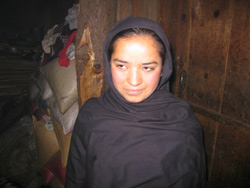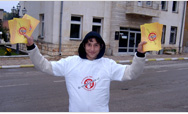You are here » Home » Telling Our Story
Case Study
Training community healthcare workers to provide education and support to the disabled
Delivering Health Care Closer to Home

| |
Photo: USAID/Suzanne Ross
|
|
“G” was one of the first women trained to promote community health in her village.
“I came to this course because my family supported my learning new skills. I am very appreciative of this opportunity to help others,” said one community health outreach volunteer.
|
Challenge
Ruila, a woman in her early thirties, and 29 other woman between the ages of 18 and 45 are huddled together in a tent to learn about basic health care and hygiene. They are the first group of woman to be trained as community-based health care providers in Mansehra District, northern Pakistan. After the October 2005 earthquake, survivors were unable to travel to existing health facilities. Within three days of the disaster, a basic health care unit set up in a tent began providing 24-hour treatment, seven days a week. But more and more sick and injured people descended into the valley seeking medical care. Treating an average 250 patients per day, it became clear to the three-person medical team that they needed to do something to expand health care outreach and to find a way to safely transport those needing critical care to medical facilities.
Initiative
USAID responded by providing the hospital with an ambulance that doubles as an outreach vehicle. Doctors can now visit patients in mountain villages perched high above the valley. USAID also funded a training course for community health workers. Male and female representatives volunteered from each village for training to become health educators and basic health-care providers, while doctors at the basic health unit continued acting as back-up support. The course covered sanitation and dietary information, teaching participants how to prepare safe drinking water, clean and bandage an abrasion, splint a broken limb, soothe coughs and respiratory infections, and even deliver a baby. A manual given to community health care teams contains written instructions and step-by-step, illustrative diagrams.
Results
Each trainee volunteered for different reasons. One said she wanted to learn how to take care of family members and neighbors. Another said, “I can earn money by helping others.” A third added, “I came to this course because I want to learn new skills.” The positive response to the program and the success of trainees shows how, with outside help, affected communities can respond to the challenges they face.
Print-friendly version of this page (377kb - PDF)
Click here for high-res photo
Back to Top ^ | 

